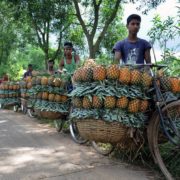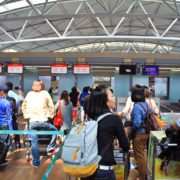Archive | Economics RSS feed for this section
Economics, Finance sector development
 Economics, Social development and protection
Economics, Social development and protection
 Economics, Finance sector development
Economics, Finance sector development
 Economics, Finance sector development, Health, Social development and protection
Economics, Finance sector development, Health, Social development and protection
 Climate change, Economics, Environment, Governance and public sector management
Climate change, Economics, Environment, Governance and public sector management
 Economics, Finance sector development
Economics, Finance sector development
 Agriculture and natural resources, Economics
Agriculture and natural resources, Economics
 Economics, Governance and public sector management, Health
Economics, Governance and public sector management, Health
 Economics, Finance sector development
Economics, Finance sector development
 Economics, Finance sector development, Information and Communications Technology
Economics, Finance sector development, Information and Communications Technology

Should emerging Asia worry about a “taper tantrum” post-COVID-19?

With an improved growth outlook in the United States (US) in the second half of 2021 as the economy recovers from the coronavirus disease (COVID-19), in part related to the substantial fiscal stimulus in the US introduced at the start of 2021, the Federal Reserve (Fed) is on course to slow down its asset purchases program, or so-called quantitative easing (QE) tapering.
Supporting the creative economy for sustainable development in Southeast Asia

Many efforts have been made in Southeast Asia to support creative industries and boost the creative economy, realizing the ability of knowledge-based economic activities to foster income generation, job creation, and export earnings while promoting social inclusion, cultural diversity, and human development (UNCTAD 2010: 10).
Foreign holdings of local currency bonds: A double-edged sword for emerging Asia

Local currency bond markets (LCBMs) have continued to develop in emerging Asian economies since the early 2000s, with foreign investor participation rising markedly since the global financial crisis of 2007–2008. LCBMs help to enhance domestic financial stability by enabling governments and companies to borrow in domestic currency.
Remittance inflows giving resilience to Bangladesh’s rural economy amid COVID-19

While the World Bank has identified Bangladesh as one of only three big economies that had increases in remittance inflows in 2020, along with Pakistan and Mexico (Ratha et al. 2020), and remittances have long made up a substantial share of people’s income in the country, preliminary results from a recent study supported by the Asian Development Bank Institute (ADBI) finds surprising resilience for remittance inflows into the rural economy during the first wave of the coronavirus disease (COVID-19) pandemic in Bangladesh.
Unfolding a holistic approach to disaster risk reduction

This year marked the 10th anniversary of the Great East Japan Earthquake, of which economic losses are estimated at $221 billion (EM-DAT), making it the most costly natural disaster recorded since 1900. The earthquake itself did not cause significant damage or casualties, but the subsequent 5–20 meter tsunami hit northern coastal areas, washing away townships and destroying the cooling system at the Fukushima Daiichi Nuclear Power Plant. To date, the recovery process is still ongoing to restore industries and economic activities to their pre-disaster levels.
Do persistent current account imbalances hamper regional and global growth?

Current account surpluses have persisted in a number of Asian and European economies throughout the global financial crisis and thereafter. Along with Germany, Japan has a decades-long history of recording current account surpluses. Due to rapid improvements in the competitiveness of its manufacturing sector, Japan has almost continuously recorded trade surpluses since the mid-1960s, and as a result, record current account surpluses (Shirakawa 2011).
Transitioning to high-value agriculture through cluster-based development

Income growth, urbanization, nutritional awareness, and supermarket revolutions in Asia are fueling demand for high-value agricultural products (HVPs), such as vegetables and fruits. This change in consumer demand can provide new agri-food market opportunities, which in turn can contribute to numerous Sustainable Development Goals through increased rural income, rural livelihood improvement, and rural poverty reduction.
Can closing borders shut out new COVID-19 strains?

In fighting the coronavirus disease (COVID-19) pandemic and, in particular, the new strains that are emerging, many countries have adopted the dual approach of closing borders and increasing domestic surveillance. This might be overkill. In fact, the latter might suffice.
Achieving resilient emerging market economies amid the macroeconomic challenges of the 21st century

Emerging market economies have faced a host of challenges in the post-global financial crisis (GFC) environment. The GFC environment was shaped by the confluence of four key developments. The first was financial globalization and de-regulation, processes that started in the late 1970s in Organisation for Economic Co-operation and Development (OECD) countries. These later spread to emerging markets in the 1990s and 2000s and transformed the global financial system into a complex cobweb of global networks, exposing countries to financial shocks transmitted by volatile bursts of capital inflows and outflows of “hot money.”
Fintech development transforming the financial landscape in the People’s Republic of China

Financial technology (fintech) is rapidly changing the financial landscape in the People’s Republic of China (PRC), with important implications for financial inclusion and macroeconomic stability (Huang 2020). Fintech in the PRC started at the end of 2004 when the mobile payment service Alipay first came online. However, fintech did not grow dramatically until 2013, when the online money market fund Yu’ebao started to receive investments from Alipay users.


Search
Subscribe / Connect to Asia Pathways
Subjects
- Agriculture and natural resources
- Blog
- Capacity development
- Climate change
- Economics
- Education
- Energy
- Environment
- Finance sector development
- Gender
- Governance and public sector management
- Health
- Industry and trade
- Information and Communications Technology
- Infrastructure
- Miscellaneous
- Population
- Poverty
- Private sector development
- Regional cooperation and integration
- Sanitation
- Social development and protection
- Transport
- Uncategorized
- Urban development
- Video Blog
- Water
Recent Posts
- Transforming ASEAN: Advancing Regional Integration, Social Inclusion, and Environmental Sustainability
- Development of the Creative Economy in Asia and the Pacific
- Kashima City’s Great Transformation: Where Industry Meets Community
- Mechanization Driving the Future of Agriculture in Asia
- Natural Capital: Valuing Nature to Protect and Restore Ecosystem Services for Sustainable Development




Recent Comments